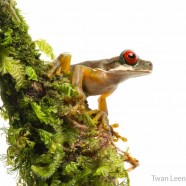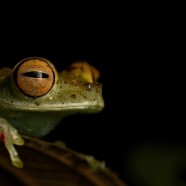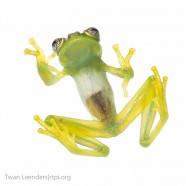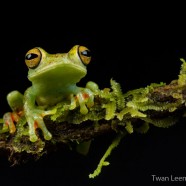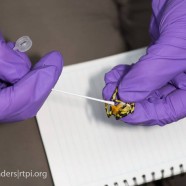Rufous-eyed Brook Tree Frog
Happy Frog Friday to you with this Rufous-eyed Brook Tree Frog (Duellmanohyla rufioculis) as shot by RTPI President Twan Leenders. He is hurriedly trying to meet the deadline for his forthcoming Amphibians of Costa Rica – a Field Guide with over 200 species, 500 plus pages, and hundreds of fantastic photos like this one.
Read MoreRed-webbed Tree Frog (Hypsiboas rufitelus)
Take a look at this unreal shot of an unbelievable pair of eyes on this Red-webbed Tree Frog (Hypsiboas rufitelus) by RTPI Affiliate Sean Graesser. This is one of those photos that transports you all the way to Costa Rica from the comfort of your screen.
Read MoreDwarf Glass Frog (Teratohyla spinosa)
Do you know what color a frog’s bones are? Well, in this case, you can tell us! Check out this Dwarf Glass Frog (Teratohyla spinosa) and you can see the green bones along with the rest of its internal anatomy. Photographed by RTPI President Twan Leenders in Costa Rica.
Read MoreRed-webbed Tree Frog (Hypsiboas rufitelus)
Although the weather was uncharacteristically hot and dry in Costa Rica during this last trip, many good species allowed themselves to be found for RTPI President Twan Leenders – including this Red-webbed Tree Frog (Hypsiboas rufitelus).
Read MoreLimosa Harlequin Frog (Atelopus limosa)
This is what it is all about – being able to see healthy Limosa Harlequin Frogs (Atelopus limosus) in their natural environment and trying to unlock the secrets of this population through our research in Cocobolo Nature Reserve, Panama. Hopefully we can we help to expand the size of this population through careful habitat management and apply the lessons learned elsewhere to allow other populations of this, and some of the many other endangered amphibians in the world to return where they belong: in a healthy environment. Twan Leenders RTPI President
Read More



